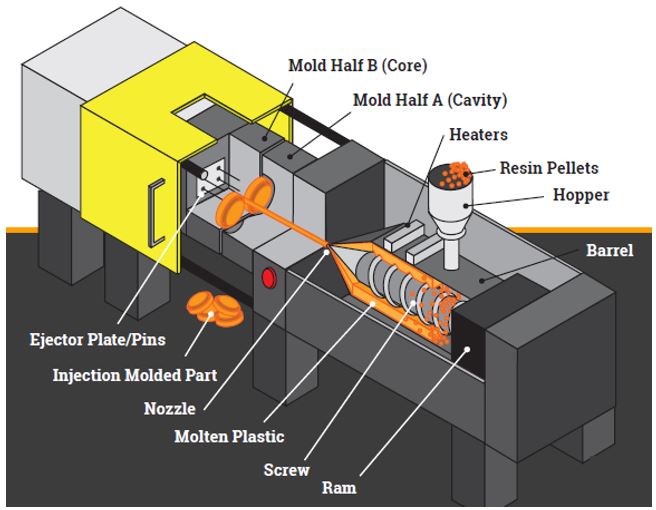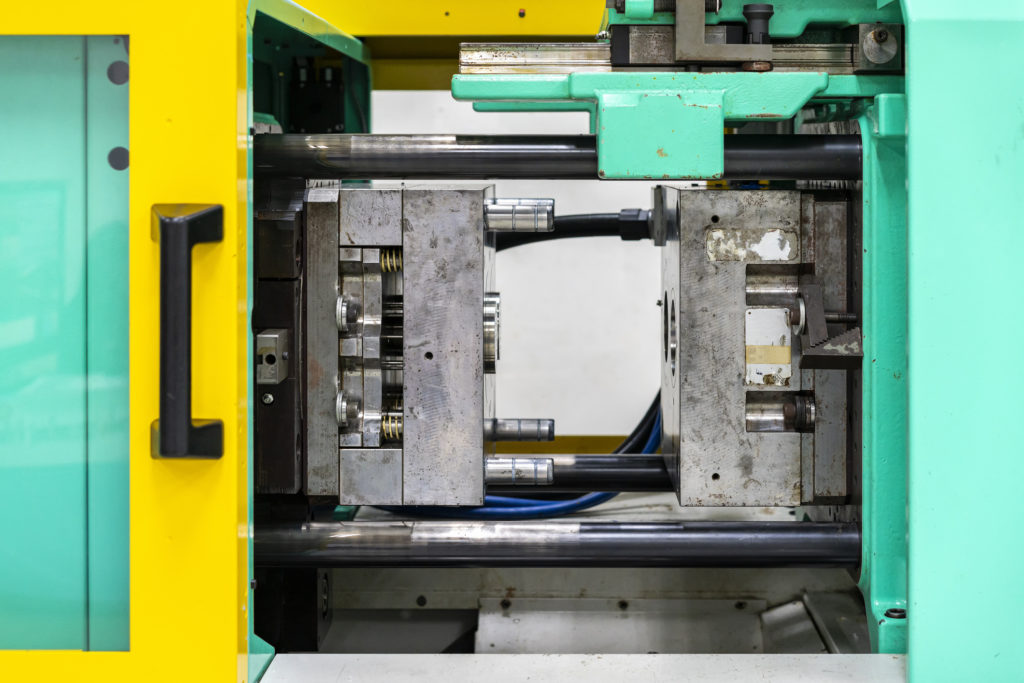Exactly How Plastic Injection Molding Makes Sure Uniformity and Accuracy in Production
Exactly How Plastic Injection Molding Makes Sure Uniformity and Accuracy in Production
Blog Article
Comprehending the Fundamentals of Plastic Shot Molding Procedures
Plastic shot molding offers as a cornerstone of modern production, giving a systematic technique to producing intricate parts with precision. Checking out these important components can disclose exactly how even minor changes can lead to substantial improvements in production outcomes, increasing questions regarding the capacity for innovation in this well established procedure.
What Is Plastic Shot Molding?
Plastic injection molding is an extensively made use of production process that changes thermosetting and thermoplastic materials into exact and complicated shapes. This technique is preferred for its ability to produce high quantities of identical get rid of phenomenal accuracy, making it a crucial technique in various markets, consisting of automotive, customer items, and clinical devices.
The process includes melting the selected plastic product and infusing it right into a mold and mildew under high stress. The mold and mildew, made to the requirements of the wanted part, enables the liquified plastic to form as it cools and strengthens. When the product has solidified, the mold is opened up, and the completed element is expelled.
Plastic shot molding offers numerous benefits, including minimized waste, uniformity in manufacturing, and the capacity to incorporate complex designs that might be testing with various other making approaches. Furthermore, it supports a wide variety of materials, each giving special properties that can be customized for particular applications. As sectors remain to innovate, plastic shot molding stays at the leading edge, enabling the development of innovative products that fulfill advancing customer needs.
The Shot Molding Refine
The shot molding process is an advanced method that includes several crucial phases to create premium plastic parts. Plastic pellets are fed right into a heated barrel where they are melted into a viscous liquid. This molten plastic is then infused under high stress right into a precision-engineered mold, which shapes the product right into the desired kind.
As soon as the mold is loaded, the plastic is enabled to cool down and strengthen, taking the form of the mold cavity. Air conditioning time is critical, as it affects the cycle time and the last residential properties of the molded component. After adequate cooling, the mold opens, and the ended up part is expelled using ejector pins.

Products Used in Injection Molding
Various materials can be utilized in the injection molding process, each offering special properties that deal with details applications. The most commonly used products consist of thermoplastics, thermosetting plastics, and elastomers.

Thermosetting plastics, like epoxy and phenolic resins, go through a chemical change during the healing procedure, resulting in a stiff, inflexible structure. These products are perfect for applications needing high heat resistance and structural stability, often utilized in automobile components and electric insulators.
Elastomers, consisting of silicone and rubber-based materials, offer versatility and durability. Their one-of-a-kind homes make them ideal for applications that require elasticity, such you could try here as gaskets and seals.
In addition, specialized products like bio-based plastics and composites are getting traction for their ecological advantages and improved efficiency features, expanding the extent of injection molding applications in various industries. Recognizing the residential or commercial properties of these materials is important for choosing the proper type for certain jobs.
Advantages of Injection Molding
Injection molding stands out as a highly reliable production process that provides various advantages for generating intricate components with precision. One of one of the most substantial benefits is the ability to develop detailed styles that would be impossible or challenging to attain with various other techniques (Plastic Injection Molding). The process permits detailed attributes and limited tolerances, ensuring high-grade elements
Additionally, shot molding is understood for its rapid manufacturing capabilities, making it an ideal selection for high-volume manufacturing. read this As soon as the mold is developed, parts can be produced swiftly, decreasing preparations and enhancing total efficiency. This efficiency not just lowers manufacturing prices however also gives an affordable edge on the market.
The versatility of products used in injection molding better improves its allure. A large range of thermoplastics and thermosetting polymers can be employed, permitting makers to select materials that ideal meet their certain requirements, including versatility, warmth, and toughness resistance.
Additionally, the procedure minimizes waste, as excess material can typically be reused and recycled. This sustainability facet adds to a decreased environmental effect, making shot molding a liable production choice. Overall, the advantages of injection molding make it a favored technique for lots of sectors.
Variables Influencing Item Top Quality
While numerous factors can influence product quality in injection molding, understanding these elements is critical for attaining optimum results. Trick aspects consist of product selection, refining specifications, and mold design.
Material selection plays a crucial duty, as various polymers show one-of-a-kind homes that impact flowability, toughness, and thermal security. Insufficient product selection can bring about issues such as warping or insufficient filling.
Processing specifications, consisting of temperature, cycle, and stress time, must be diligently controlled. Variations in these settings can lead to inconsistencies in component dimensions and surface area finish. For instance, excessively high temperature levels may cause deterioration of the polymer, while poor pressure can cause short shots.
Mold and mildew layout is just as vital, as it figures out the flow of the molten plastic and the cooling process. Poorly developed mold and mildews might cause unequal cooling rates, resulting in recurring stresses and dimensional errors.

Final Thought
In final thought, plastic injection molding go serves as a critical production process that enables the effective production of premium components. Mastery of the injection molding process, consisting of the understanding of materials and the influence of various elements on item high quality, is necessary for achieving optimum outcomes. The advantages of this technique, such as cost-effectiveness and layout versatility, more underscore its importance across multiple sectors, solidifying its status as a recommended choice for high-volume production.
Plastic shot molding offers as a foundation of modern production, providing a systematic approach to creating complicated elements with accuracy.Plastic shot molding provides numerous benefits, consisting of decreased waste, uniformity in production, and the capacity to incorporate intricate layouts that may be testing with other making techniques (Plastic Injection Molding). As sectors continue to introduce, plastic injection molding continues to be at the forefront, making it possible for the advancement of innovative products that satisfy evolving customer needs
The injection molding procedure is a sophisticated method that entails several essential stages to produce high-quality plastic elements.In conclusion, plastic injection molding offers as a crucial production procedure that enables the effective manufacturing of high-quality elements.
Report this page